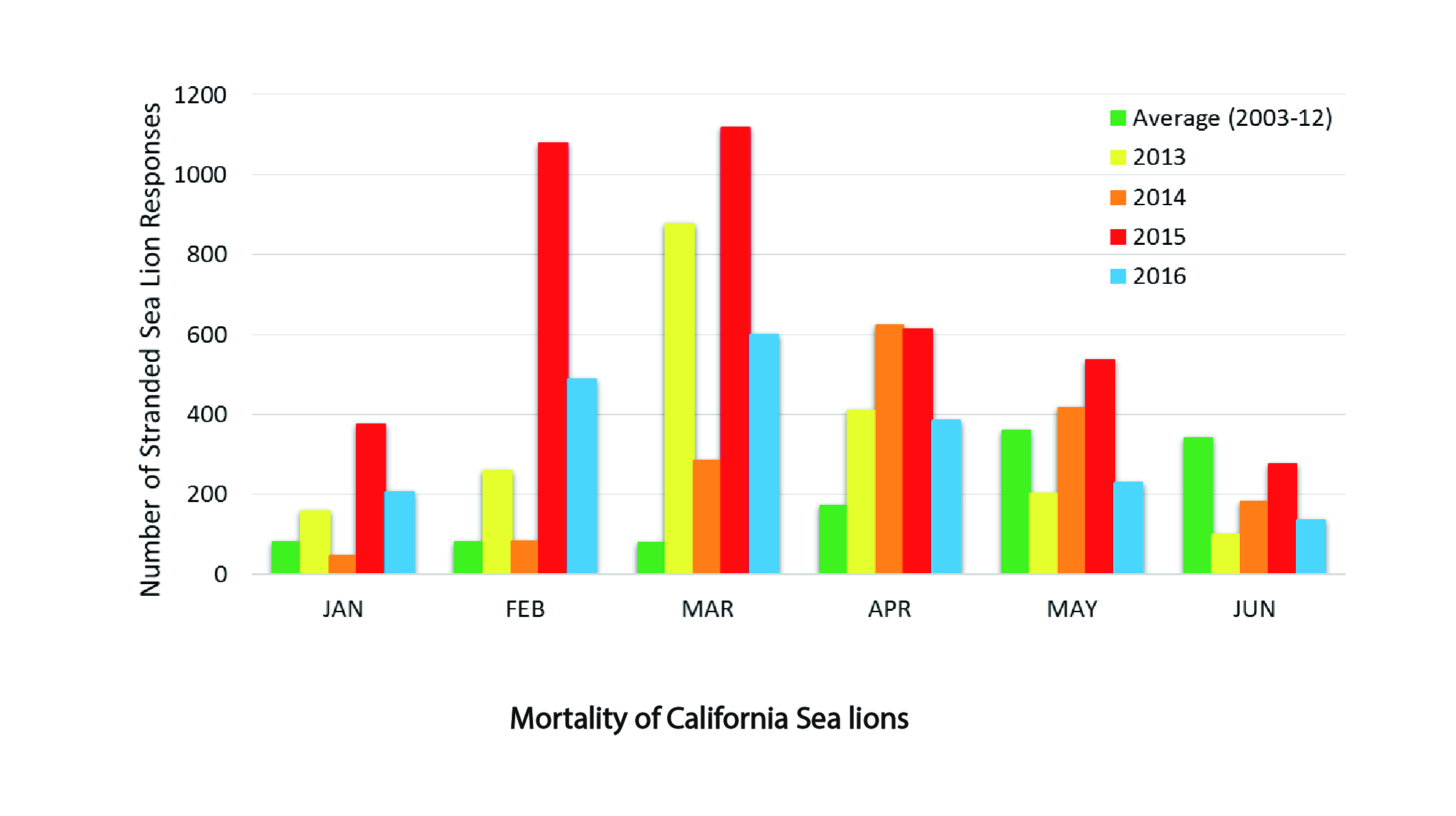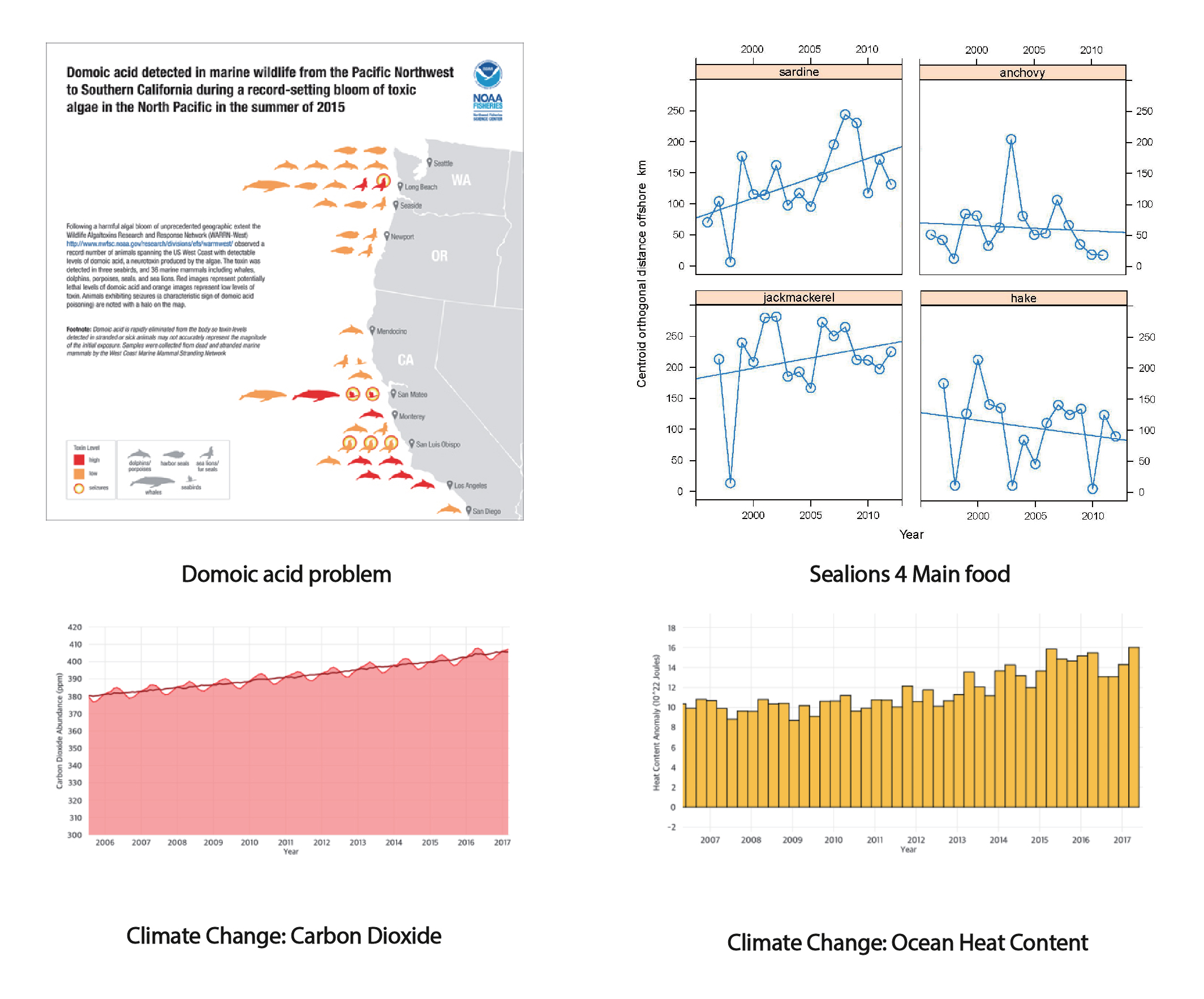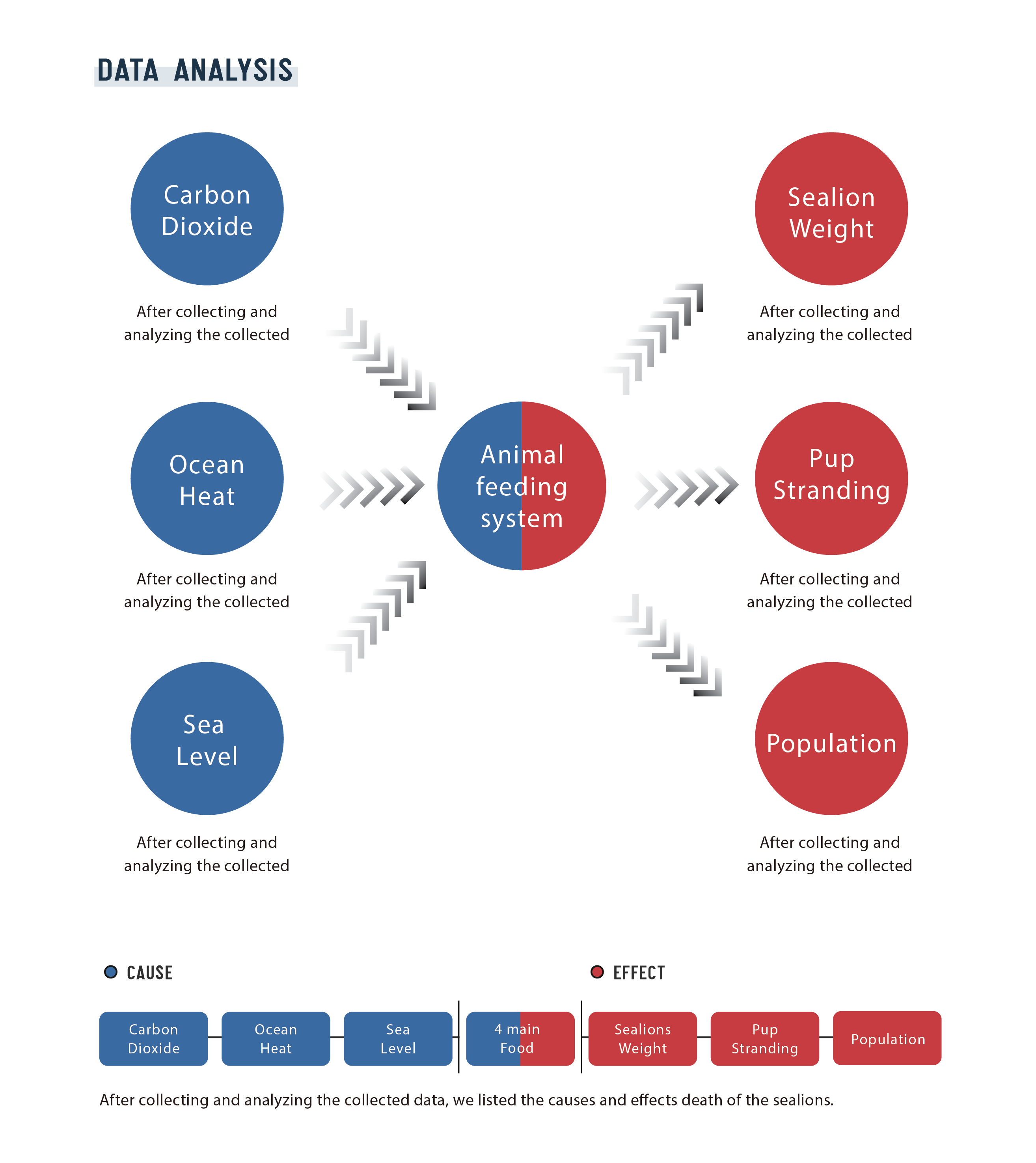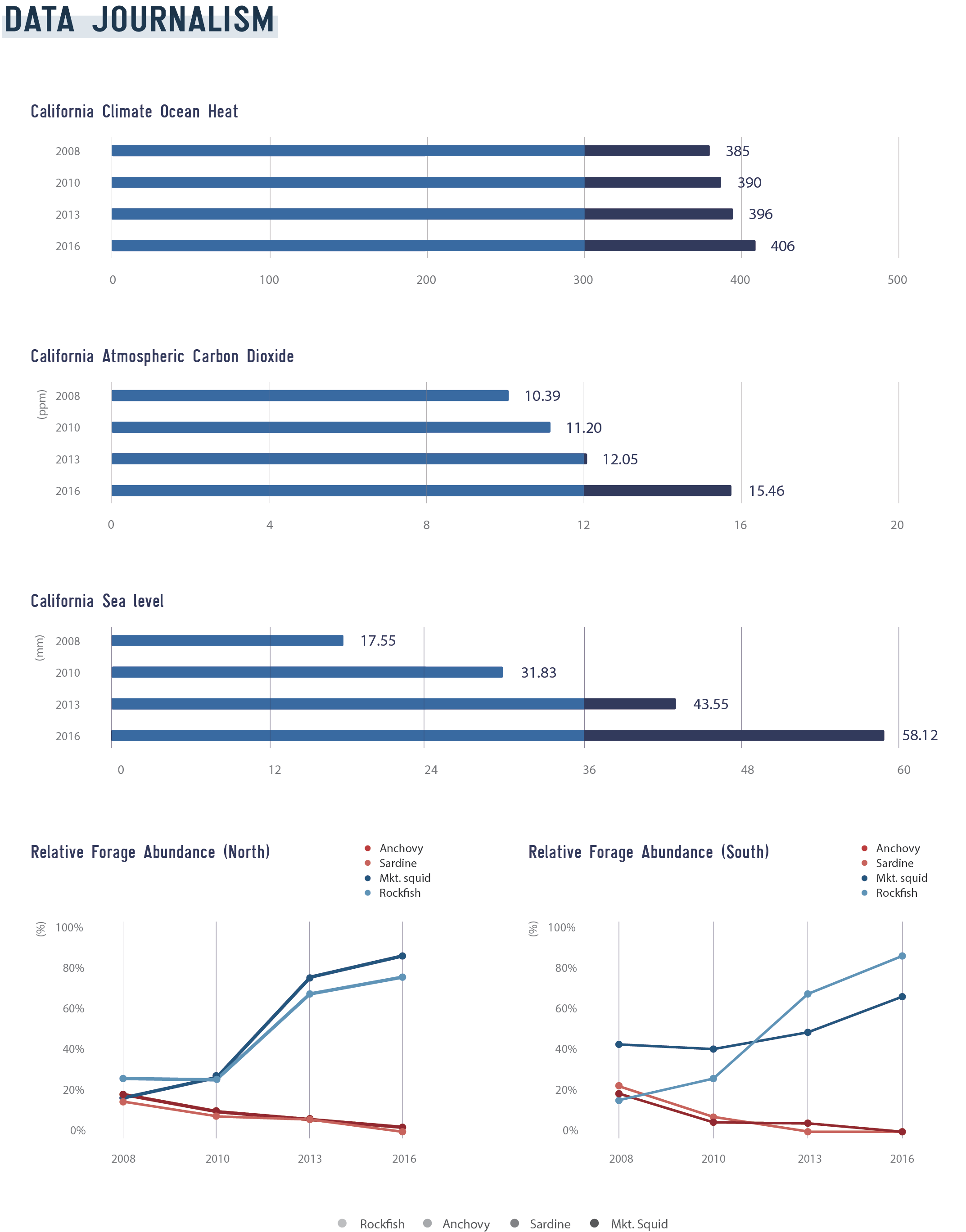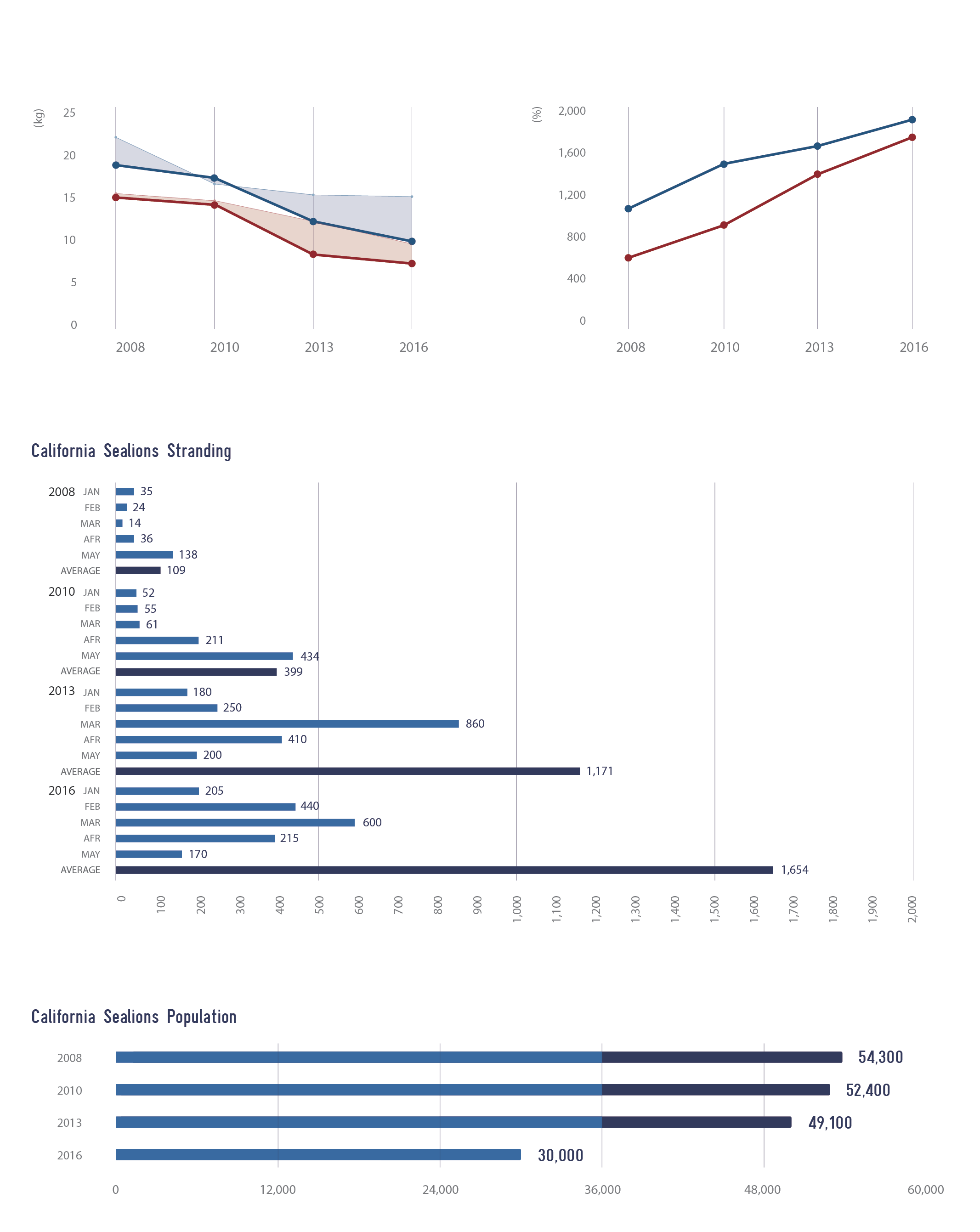Introduction
Elevated stranding of California sea lion pups have occurred in Southern California since January 2013 for unknown reasons. This event has been declared an unusual mortality event (UME). The number of California sea lions has been decreasing due to many factors, and the exact mechanism behind this trend is still under investigation. According to the National Oceanic and Atmospheric Administration (NOAA), various influences have impacted these sea lion pups. Sardine spawning grounds shifted further offshore in 2012 and 2013, and while other prey was available (market squid and rockfish), they may not have provided adequate nutrition for the milk of sea lion mothers supporting pups or for newly weaned pups foraging on their own. Findings indicate a lack of high-quality, nearby food sources for nursing mothers. How can we visualize the multivariate, unclear reasons effectively?

